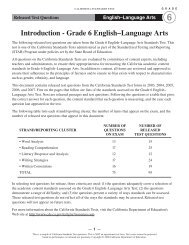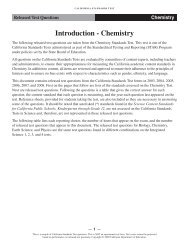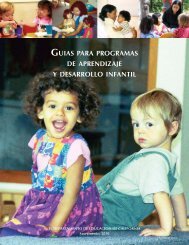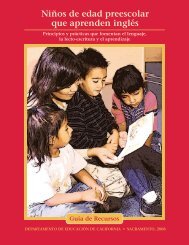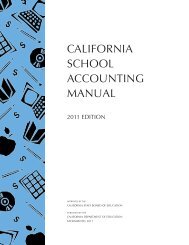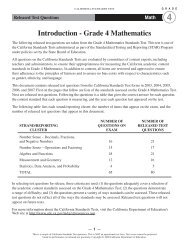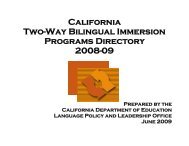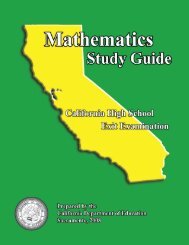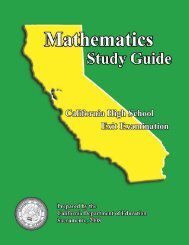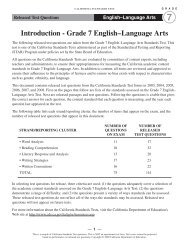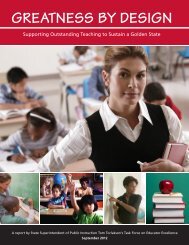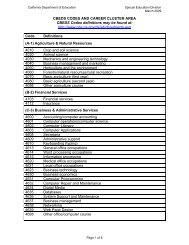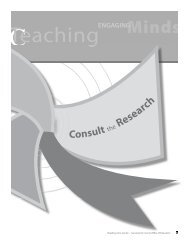Grade 2 - California Department of Education
Grade 2 - California Department of Education
Grade 2 - California Department of Education
Create successful ePaper yourself
Turn your PDF publications into a flip-book with our unique Google optimized e-Paper software.
State Board <strong>of</strong> <strong>Education</strong>-Adopted <strong>Grade</strong> Two Page 13 <strong>of</strong> 45<br />
186<br />
187<br />
188<br />
189<br />
190<br />
191<br />
192<br />
193<br />
194<br />
195<br />
196<br />
197<br />
198<br />
199<br />
Students may still need to support the development <strong>of</strong> their fluency with math<br />
drawings when solving problems. Math drawings represent the number <strong>of</strong><br />
objects counted (using dots and sticks) and do not need to represent the context<br />
<strong>of</strong> the problem. Thinking about numbers using frames <strong>of</strong> 10 or making drawings<br />
using 5-groups and tens can be a helpful way to understand single-digit additions<br />
and subtractions. An example <strong>of</strong> interactive games students can play to develop<br />
counting and addition skills are available<br />
at http://illuminations.nctm.org/ActivityDetail.aspx?ID=75 (National Council <strong>of</strong><br />
Teachers <strong>of</strong> Mathematics [NCTM] Illuminations).<br />
[Note: Sidebar]<br />
FLUENCY<br />
In the standards for kindergarten through grade six there are individual content standards that<br />
set expectations for fluency in computation (e.g., “fluently” add and subtract within 20, standard<br />
2.OA.1▲.) Such standards are culminations <strong>of</strong> progressions <strong>of</strong> learning, <strong>of</strong>ten spanning several<br />
grades, involving conceptual understanding, thoughtful practice, and extra support where<br />
necessary.<br />
The word “fluent” is used in the standards to mean “reasonably fast and accurate” and the ability<br />
to use certain facts and procedures with enough facility that using them does not slow down or<br />
derail the problem solver as he or she works on more complex problems. Procedural fluency<br />
requires skill in carrying out procedures flexibly, accurately, efficiently and appropriately.<br />
Developing fluency in each grade can involve a mixture <strong>of</strong> just knowing some answers, knowing<br />
some answers from patterns, and knowing some answers from the use <strong>of</strong> strategies.<br />
Mental strategies help students develop fluency as they make sense <strong>of</strong> number<br />
relationships while they add and subtract within 20.<br />
Mental strategies<br />
• Counting on<br />
• Making tens (9 + 7 = (9 + 1) + 6 = 10 + 6)<br />
• Decomposing a number leading to a ten ( 14 – 6 = 14 – 4 – 2 = 10 – 2 = 8)<br />
• Fact families (8 + 5 = 13 and 13 - 8 = 5)<br />
• Doubles (1 + 1, 2 + 2, 3 + 3, etc.)<br />
• Doubles plus one (7 + 8 = 7 + 7 + 1)<br />
The Mathematics Framework was adopted by the <strong>California</strong> State Board <strong>of</strong> <strong>Education</strong> on<br />
November 6, 2013. The Mathematics Framework has not been edited for publication.



